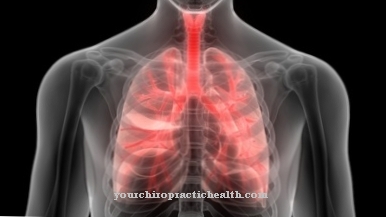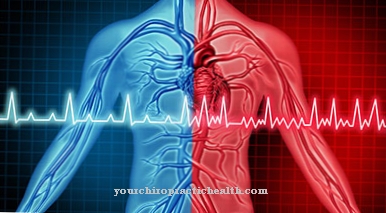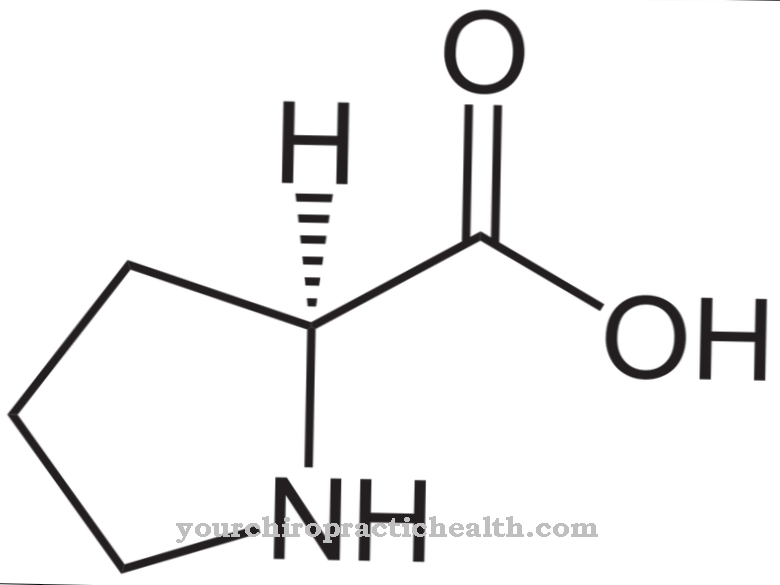Under Sympathetic tone the not precisely measurable and constantly changing state of excitation of the sympathetic nervous system is summarized. An increased sympathetic tone puts the body into a kind of reaction mode such as flight or attack. Among other things, it manifests itself in an increase in blood pressure, an accelerated heart rate, constriction of the peripheral blood vessels and a decrease in bowel activity. The main antagonist is the parasympathetic nervous system, which ensures relaxation and regeneration.
What is sympathetic tone?

The term sympathetic tone summarizes the state of excitement of the sympathetic nervous system. The sympathetic nervous system, together with its antagonist, the parasympathetic nervous system, is assigned to the vegetative nervous system.
The sympathetic tone cannot be precisely measured and changes constantly to adapt to the current situation. When the sympathetic tone increases, the body is put into an increased reaction mode and an increased physical and muscular motivation. Physiologically, the body is optimally programmed to flee or attack (stress reaction).
However, the flight or fight mode is somewhat at the expense of other functions that are important for survival, so that a phase of high sympathetic tone must be followed by a phase of relaxation, which is achieved through an increased release of the neurotransmitter acetylcholine via the parasympathetic nervous system.
In a healthy person, sympathetic and parasympathetic tone complement each other and there is a balance between the two antagonists. In phases, the sympathetic or parasympathetic tone determines the physiological events in the body.
Function & task
The sympathetic tone, which is a measure of the sympathetic state of excitement, was of great developmental importance for the immediate protection of humans. A high sympathetic tone, synonymous with a high level of stress, sets in motion a cascade of short-term physiological changes that optimally prepare people for flight or attack. The blood vessels that supply the skeletal muscles react with dilatation, while vessels of the skin and some organs, such as B. the kidneys, are narrowed. With a simultaneous increase in blood pressure and heart rate, an improved supply of the muscles is achieved and at the same time the risk of peripheral bleeding is reduced in the event of a possible injury.
In addition, the intestinal peristalsis and urine production are slowed down in order to achieve a longer endurance, also in the area of necessary excretions. Increased glycolysis through the breakdown of carbohydrates and increased cerebral blood flow combine optimal physical performance with optimal brain performance.
Developmentally, the main benefit of sympathetic tone was probably optimal protection against attackers, either by flight or by attack. A high sympathetic tone offers the best physiological preparation for both options.
The changed way of life in the industrialized world often leads to stressors appearing that trigger a high level of sympathetic tone, which sets the entire physiological cascade in motion.As a rule, however, the stress hormones cannot be reduced through high physical performance or endurance, because flight or attack would be counterproductive in the situation and the next stressor appears before the stress hormones are reduced. There is therefore often the risk that the body is constantly kept on alert due to particular stressors. The original protective mechanism can then turn into a risk of developing a cardiovascular problem in the form of high blood pressure or other secondary diseases.
Illnesses & ailments
A high sympathetic tone, which can be identified by a concentration of stress hormones (adrenaline, noradrenaline) above the normal level, causes a series of short-term, physiological changes in the body, all of which aim to create optimal conditions for escape or attack in the event of a threat . In principle, disease-related functional restrictions can occur at any point in the diverse physiological changes.
In direct connection with the sympathetic tone is a poor balance between sympathetic and parasympathetic tone. It often leads to an almost permanent dominance of the sympathetic over the parasympathetic. The body has too little opportunity to regenerate because the body is constantly in an alarm state and many physiological processes no longer take place in normal mode.
Typical complaints that result from this are nervousness, sleep disorders with daytime sleepiness, cramps and digestive problems. The relatively unspecific symptoms led many doctors to diagnose vegetative dystonia in the 1950s and later. The term is controversial among medical specialists today, since it is often "only" a disruption of the relationship between sympathetic and parasympathetic tone in favor of sympathetic tone.
The shifted relationship between the sympathetic and parasympathetic nervous system is known as sympatheticotonia. The sympatheticotonia is very likely due to the fact that frequent stressors cause a more or less permanent high concentration of stress hormones that cannot be physically "worked off", so that some physiological processes only run in alarm mode and cause complaints.
Sympatheticotonia also carries risks for the cardiovascular system. The frequent rise in blood pressure due to the frequent release of stress hormones harbors the risk that the increased blood pressure and usually an increased heart rate will become permanent and chronic, i.e. permanent hypertension with all its sequelae will develop.
It is very likely that genetic factors play a role. The excitability caused by stressors is very individual. The sympathetic centers in the spinal cord receive impulses from certain regions in the central nervous system and respond with an increase in sympathetic tone. The basic pattern follows a genetic fixation and is probably only partially acquired through living conditions.












.jpg)






.jpg)

.jpg)




.jpg)

